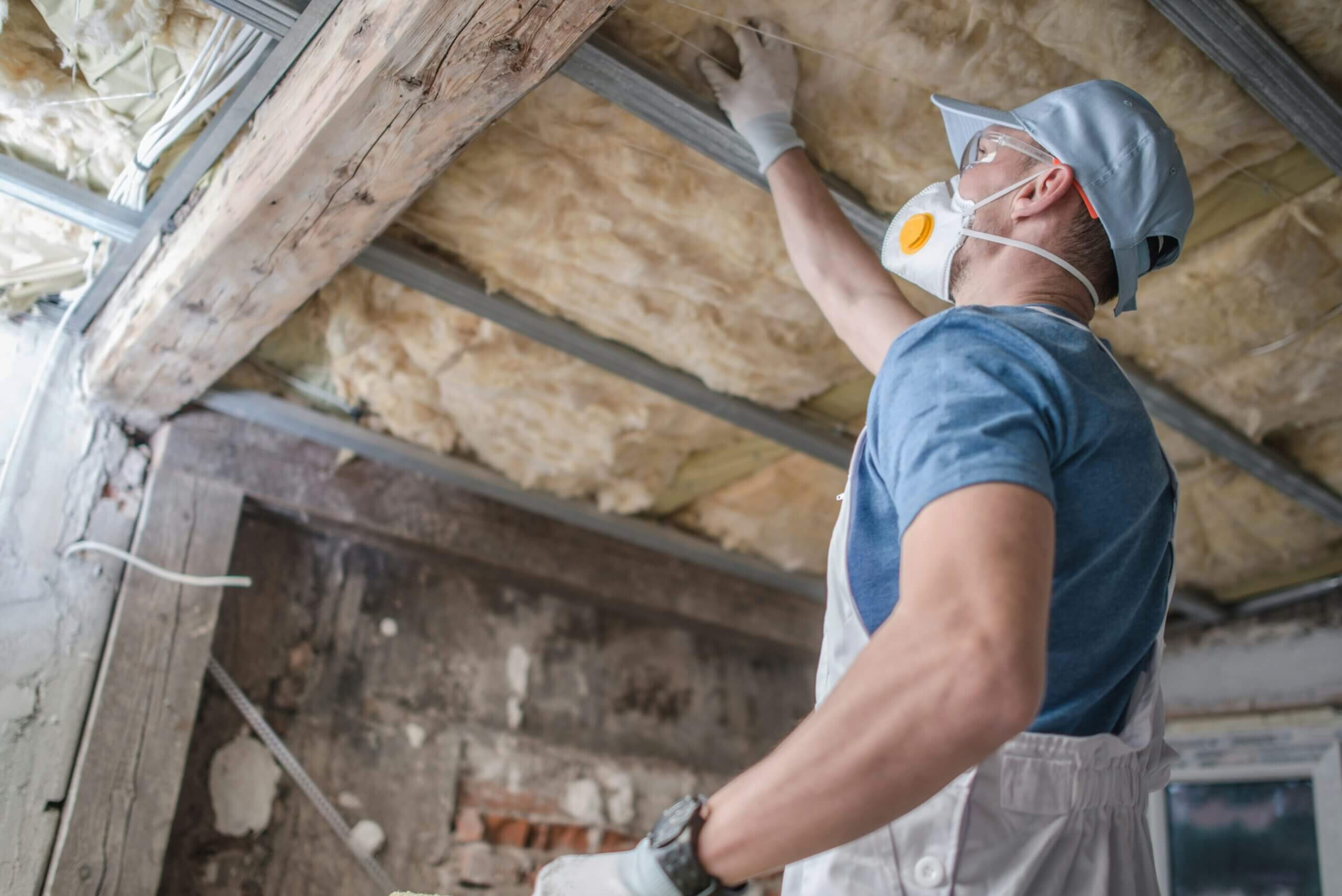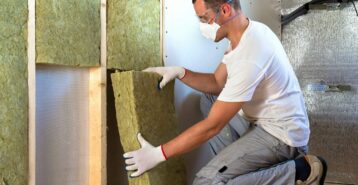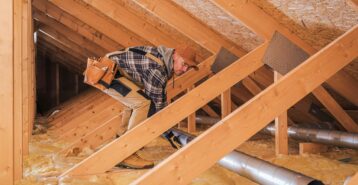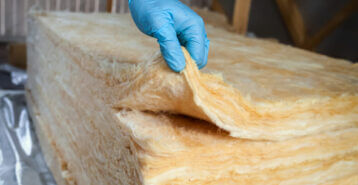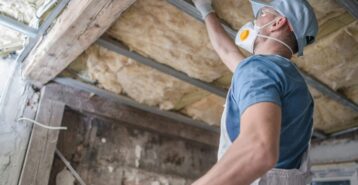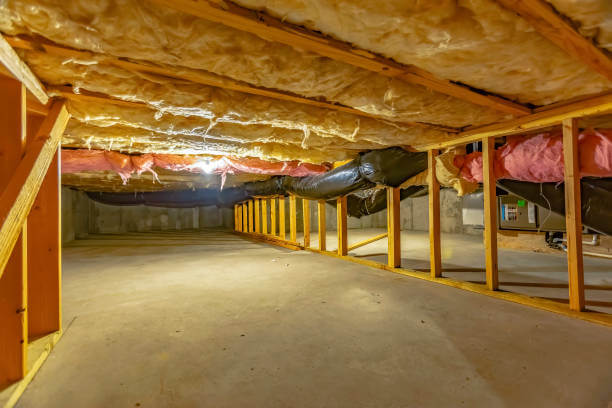What Is Basement Insulation?
Basement insulation is material installed on below-grade walls, rim joists, and sometimes floors or ceilings to slow heat loss and help manage moisture. Done right, it improves efficiency, comfort, air quality, and reduces the chance of condensation and mold.
Typical install locations include interior foundation walls, the rim/band joist, and (in some designs) the basement ceiling if you’re keeping the space unconditioned. If you’re fighting damp walls or seepage, address water first with basement waterproofing and consider pairing insulation with a vapor barrier such as AquaStop CrawlSeal.
How Does Basement Insulation Work?
Concrete and masonry conduct heat; cold surfaces also attract condensation. Insulation slows conductive heat flow, while air sealing at the rim joist and penetrations curbs drafts and moisture. In conditioned basements, you insulate the walls to bring the space into the thermal envelope. In unconditioned basements, many homeowners insulate the ceiling to separate the living space above.
Material choices and R-values vary by climate. (R-value is the capacity the material has to resist heat flow; a higher R-value indicates better insulation.) Knowing how much insulation your home needs will help you to estimate target R-values and decide what type like Spray Foam, Rolled/Batt, and Blown-In.
Do You Need Basement Insulation?
Insulation is a smart upgrade if you’re finishing the basement, live in a cold climate, have chilly first-floor floors, or see condensation/musty odors. Common signs you need more insulation (or better air sealing) include damp walls, high humidity, persistent cold spots, and minor mold. If noise is a concern, check out soundproof insulation for multi-purpose options.
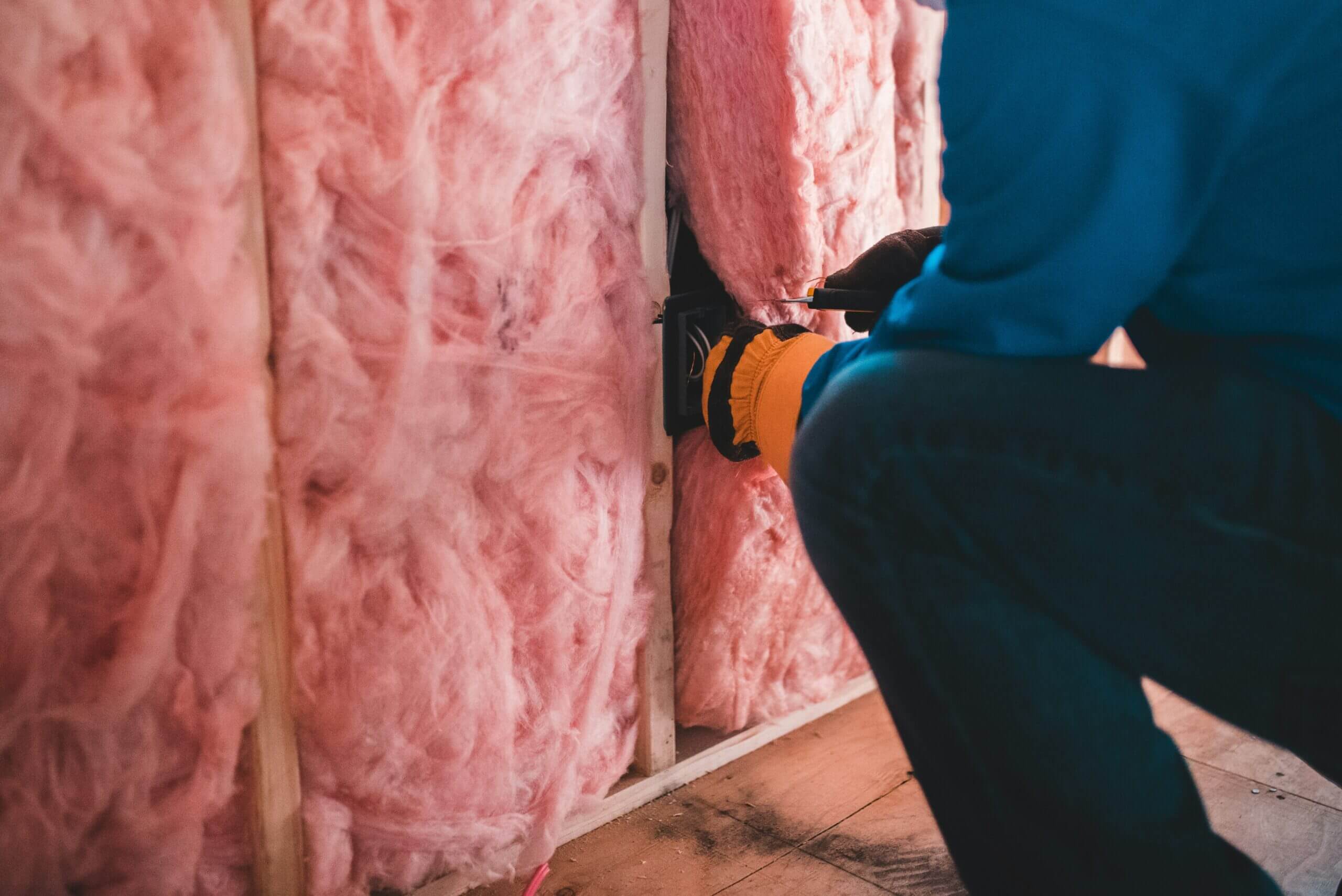
Cost of Basement Insulation
Most homeowners spend $1,400 to $6,300 total, averaging about $2,600. Smaller, targeted projects (e.g., rim joists only) land near the low end; whole-basement systems with premium materials trend higher. For more pricing context, explore our Insulation Cost Guide and Cost per Square Foot guide.
Factors That Influence the Cost
- Material: Fiberglass batts are budget-friendly; rigid foam and closed-cell spray foam cost more but resist moisture better.
- Scope: Walls only vs. walls + rim joists + ceiling.
- Prep: Moisture mitigation, air sealing, and vapor barriers.
- Access & Labor: Tight spaces and higher local rates raise price.
DIY vs. Professional Installation Costs
- DIY: You’ll mainly pay for materials and basic tools. Batt/roll installs can be cost-effective for experienced DIYers.
- Pro Install: Higher upfront labor, but pros bring code knowledge, moisture detailing, and warranties — often worth it for below-grade work. If you’re leaning pro, compare quotes from the best insulation companies.
Ongoing Maintenance Costs
Plan for annual moisture checks, sealing any new penetrations, and replacing localized sections if they get wet. Rigid foam and closed-cell spray foam are low-maintenance; fiberglass batts or blanket systems may need attention if damp.
Benefits of Basement Insulation
- Energy Savings: Reduced heat loss lowers utility bills.
- Improved Temperature Control: Fewer cold floors and drafts upstairs.
- Moisture and Mold Prevention: When paired with air sealing and proper detailing.
- Comfort In Finished Spaces: Warmer, quieter, and more usable rooms.
- Protection for Plumbing/HVAC: Pipes and equipment in a milder environment.
- Resale Appeal: Energy-minded buyers value efficient basements.
Considerations & Limitations
- Moisture First: Insulating over damp walls can trap moisture. Address water entry with interior basement waterproofing before insulating.
- Codes & R-values: Follow local R-value and fire safety requirements.
- Retrofitting Older Homes: Expect extra air sealing and furring/framing.
- Not Always Required: In dry, unconditioned storage basements, targeted rim-joist insulation may be enough.
Best Types of Materials for Basement Insulation
Below are common materials with use cases, pros/cons, and typical installed cost ranges.
| Material | Description | Pros | Cons | Typical Cost | Best Use |
|---|---|---|---|---|---|
| Foam Board (Rigid Foam) | XPS/EPS/polyiso panels adhered or fastened to interior walls; seams sealed | Moisture-tolerant; continuous insulation; durable | Higher material cost; needs fire barrier | $0.25 and $2 per board foot | Interior foundation walls; behind framed finishes |
| Closed-Cell Spray Foam | Two-part foam sprayed to walls/rim; open-cell is lighter, closed-cell is denser/vapor-resistant | Excellent air/moisture control; high R/inch | Highest cost installed; not recommended as DIY | $1 and $1.50 per board foot (coverage-dependent) | Rim joists; irregular walls; damp climates |
| Fiberglass Batts | Pre-cut blankets fitted in stud cavities | Affordable; DIY-friendly | Loses performance if damp/compressed; needs air sealing | $0.30 to $1.50 per sq. ft. (materials); Pro install $1,000–$2,400 total; DIY up to ~$700 | Framed walls where moisture is controlled |
| Mineral Wool (Rockwool) | Dense stone-wool batts or blown-in | Water- and fire-resistant; holds R when slightly damp; good sound control | Higher material cost than fiberglass; blown-in needs a pro | $1.40 to $2.10 per sq. ft. | Framed walls needing moisture tolerance/sound dampening |
| Blanket Systems | Faced fiberglass blankets on walls | Faster installs; moderate cost | Limited air seal; can trap moisture if walls are damp | $0.30 to $1.50 per square foot | Large, relatively dry basements needing quick coverage |
Foam Board Insulation (Rigid Foam)
Adhere or fasten rigid panels to the wall, seal seams, and cover with drywall or another code-approved thermal barrier. Great for moisture resistance and continuous coverage.
Spray Foam Insulation
Closed-cell foam shines at the rim joist and on irregular walls, providing an excellent air/moisture seal. Because of codes and chemistry, this is typically a job for a professional.
Fiberglass Batts (With Vapor Barrier)
Budget-friendly and DIY-oriented, but performance depends on keeping batts dry and properly fitted with framing.
Mineral Wool (Rockwool)
Resists water and fire and holds R-value even with minor humidity. A good upgrade over fiberglass in basements.
Blanket Insulation Systems
Pre-fabricated wall blankets install quickly on relatively dry walls without framing. Similar to fiberglass batts, they’re efficient in labor but require careful detailing to avoid trapping moisture.

Installation Process for Basement Insulation
Below-grade work rewards good prep. Plan on moisture checks, surface cleaning, and air sealing before any insulation goes in. For timing and safety, a typical one-to-three-day install can stretch longer with extensive prep or framing.
Preparation Steps
- Assess Moisture: Fix leaks and manage bulk water before insulating.
- Clean & Seal: Address cracks and penetrations; air-seal the rim joist.
- Vapor Control: Add a vapor barrier or membrane where required; for crawl-adjacent spaces.
Step-by-Step Installation (High Level)
- Rigid Foam Walls: Adhere/fasten panels, seal seams/edges, install thermal barrier.
- Framed Walls + Batts/Mineral Wool: Frame a stud wall off the foundation, air-seal, install insulation, then drywall.
- Spray Foam: Prep surfaces and spray to spec; apply required ignition/thermal barrier.
Maintenance Tips
- Inspect annually for damp spots, musty odors, or pests.
- Seal new penetrations and hairline gaps.
- Keep gutters/downspouts and grading moving water away from the foundation.
DIY vs. Hiring a Pro
DIY can make sense for batt or rigid foam if you’re comfortable with tools and building-code basics. Below-grade moisture detailing, fire-safety coverings, and spray foam chemistry often tip the scale towards professional installation.
Pros and Cons of DIY Insulation
- Pros: Lower cost, flexible timing, straightforward for batts/rigid foam.
- Cons: Moisture and code detailing can be tricky; mistakes reduce performance.
When Professional Help Is Worth It
Large or finished basements, spray foam applications, code-heavy jurisdictions, and any project involving water management or structural repairs.
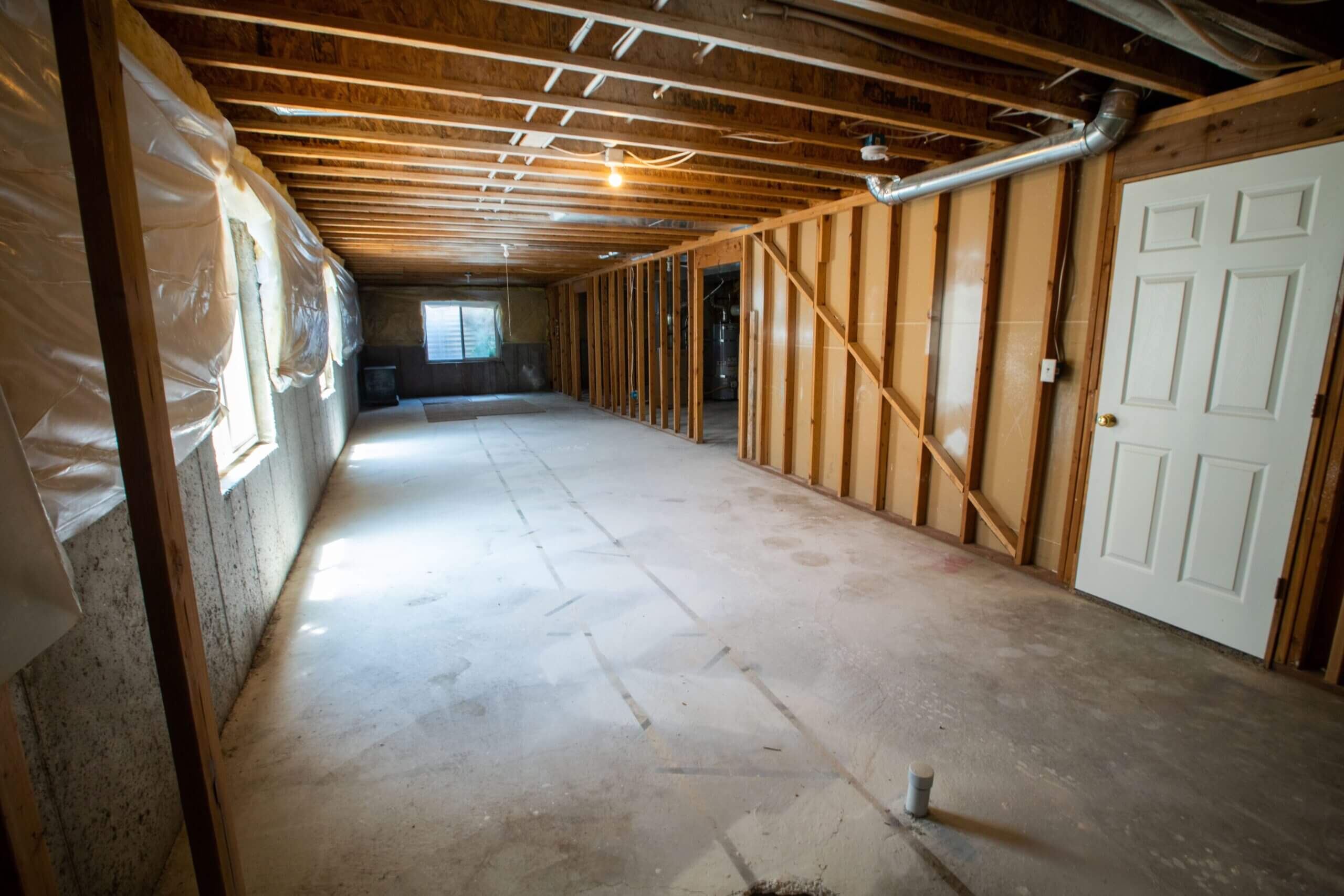
Bottom Line: Is Basement Insulation Worth It?
Basement insulation is a smart investment if you’re looking to improve comfort, reduce energy costs, and protect your finished space. Just make sure to address any moisture issues upfront, use materials designed for below-grade areas, and follow local code requirements. To get started, explore your options and request quotes with the help of our home insulation install guide.
